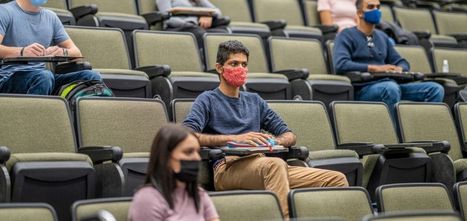-Awareness of OER has grown in recent years, with some institutions throwing their full support behind such materials for their ability to drive down college costs for students. In the new report, Achieving the Dream argued that using OER can also lead to the development of innovative teaching strategies centered on equity and inclusion.The report calls these methods open educational practices, or OEP.
Researchers identified five common characteristics associated with this type of education:
1- Student agency or ownership over courses.
2- Inclusive content tailored to students' backgrounds.
3- Student collaboration on new theories or content that can be used in future assignments.
4- Assignments meant to boost critical consciousness, which involves developing students' ability to identify and address power imbalances.
5- Classroom culture that fosters respect between students and instructors.
Via Peter Mellow



 Your new post is loading...
Your new post is loading...








